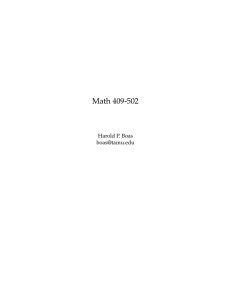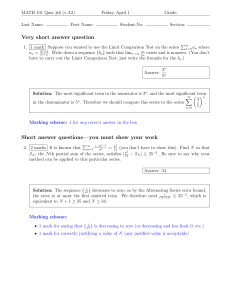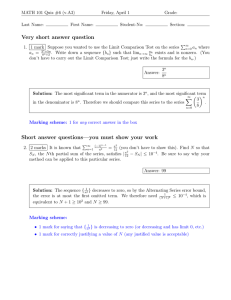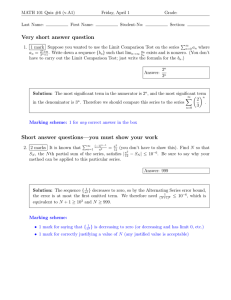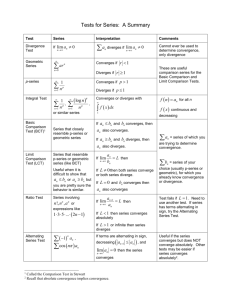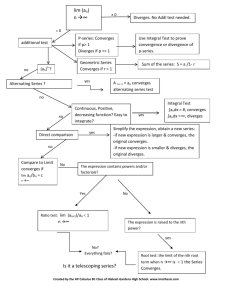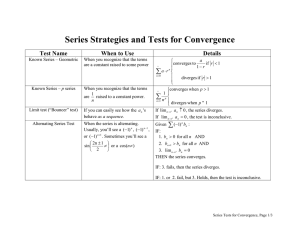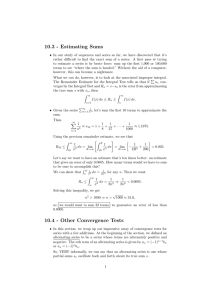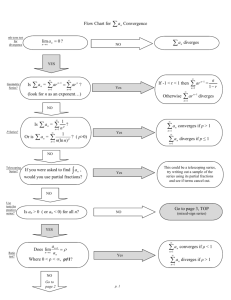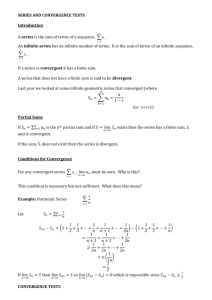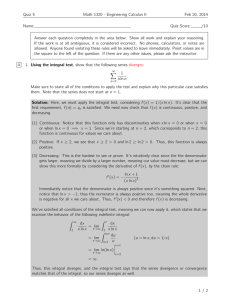Infinite Series Tests Review
advertisement
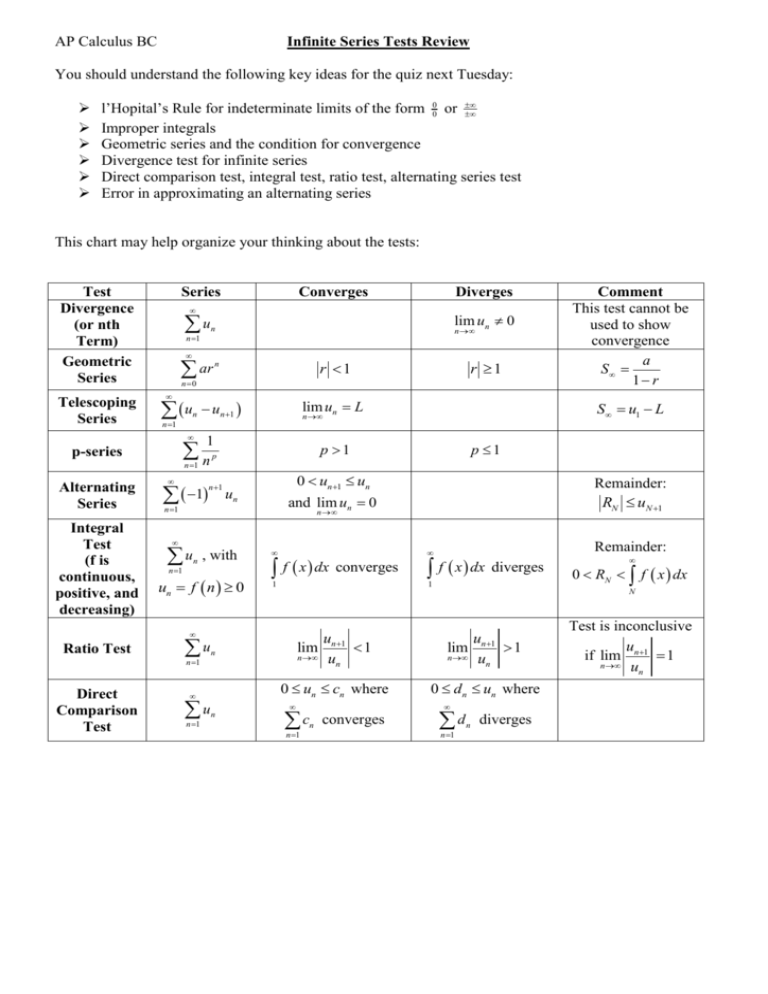
AP Calculus BC Infinite Series Tests Review You should understand the following key ideas for the quiz next Tuesday: l’Hopital’s Rule for indeterminate limits of the form 00 or Improper integrals Geometric series and the condition for convergence Divergence test for infinite series Direct comparison test, integral test, ratio test, alternating series test Error in approximating an alternating series This chart may help organize your thinking about the tests: Test Divergence (or nth Term) Geometric Series Telescoping Series Series u n 1 lim un 0 n n ar r 1 n u n 1 n un 1 lim un L 1 p 1 p n 1 n 1 Remainder: RN uN 1 n u n 1 n , with un f n 0 f x dx converges 1 u n 1 Direct Comparison Test p 1 0 un1 un and lim un 0 un u n 1 n Remainder: 1 0 RN f x dx f x dx diverges u lim n1 1 n u n 0 un cn where 0 dn un where cn converges n 1 N u lim n 1 1 n u n n Comment This test cannot be used to show convergence a S 1 r S u1 L n 1 n n 1 Ratio Test r 1 n0 Integral Test (f is continuous, positive, and decreasing) Diverges p-series Alternating Series Converges d n 1 n diverges Test is inconclusive u if lim n1 1 n u n Some Review Questions... 1. Test for convergence or divergence using any appropriate test. (a) 1 n 1 4 (g) 5 (b) n n 1 (d) n 1 n n 2 n 1 3n2 n n 1 (k) (o) n 1 1 (n) n (p) n 2n n n 2 1 10n 3 n2n n 1 10 (i) 3 n3 cos n n n 1 2 (l) 1 n n ln n n 1 ln n 2 n 1 n (n) 1 n (q) n 3 n 2 n! n 1 n 2. You are told that the terms of a positive series appear to approach 0 rapidly as n approaches infinity. In fact, u7 0.0001 . Given no other information, does this imply that the series converges? Support your answer with examples. 3. Use the ratio test n 1 4. 1 n n 1 n 3n 1 n! n 1 3 n 1 3 5 7 2 n 1 3n 3 2n n 1 n7 n n 1 n ! (f) 2n 2 n 1 4n 1 (m) n n 1 2n n 1 n 1 (h) (j) (c) (e) 1 5 n 1 n for convergence. Hopefully you saw that the ratio test failed for the series in the previous question. Since it is an alternating series, if you can show that un1 un , then the sequence is decreasing. By letting x , use calculus to find the derivative and demonstrate that f x 0 (i.e. it is x 1 decreasing!) for all x 1 . Then, complete the rest of the Alternating Series Test to show the series converges. f x 5. What is the minimum number of terms needed of the series from question 3 to approximate the actual sum to an accuracy of less than one-millionth?
